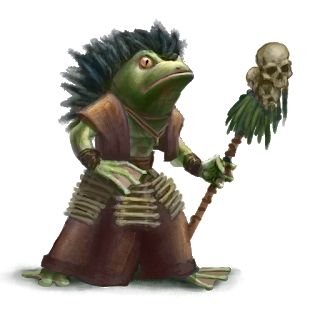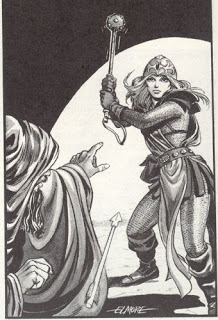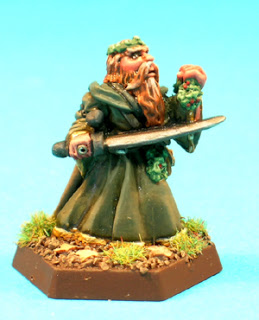Now that my first swing at doing a religion-specific subclass of cleric, rather than just doing a tweak or two to the existing cleric class, as was the norm for a long time (see my notes on the Greyhawk Adventures book for some examples), is out the door and off to the editor, more of my thoughts on the subject of specialist clerics have coalesced somewhat.
Setting aside the question of level limits, because 1E hits its “sweet spot” generally before the maximum of 15th level for a druid is reached, here are several chief differences between the cleric and the druid:
- Clerics have the ability to turn undead
- Clerics require fewer x.p. to advance in level early on, then advance more slowly
- Clerics have access to better armor
- Clerics and druids have different spell lists
- Druids have woodcraft
- Druids have immunity to woodland charm
- Druids have the ability to shape change
I would rate woodcraft and immunity to woodland charm are fairly low-utility powers, dependent on very specific circumstances. Shape change, on the other hand, is quite a powerful ability, carrying with it the power to heal 10-60% of wounds, although it is somewhat mitigated by the fact that it can only be used three times per day.
- Turning undead is on par with shape change, although slightly above it because of the limited number of times shape change can be used.
- Better armor and fewer x.p. is worth the same as two specialized skills, with a little more thrown in to offset the druids’ major power being usable only three times per day.
 That is the very rough formula I used with my demonolater class; the druid was my guide. Although one specific sub-type, who has Orcus as his patron, is on par with the cleric, because they also have the turn undead ability (along with a very specialized minor power or two, to offset the fact that they use the same level progression table as a druid).
That is the very rough formula I used with my demonolater class; the druid was my guide. Although one specific sub-type, who has Orcus as his patron, is on par with the cleric, because they also have the turn undead ability (along with a very specialized minor power or two, to offset the fact that they use the same level progression table as a druid). 










If you are speaking 1st Edition AD&D here, as it would seem, you are somewhat mistaken on one point (Clerics require fewer x.p. to advance in level), and you have totally missed an important difference (Druids have a faster spell progression–they can cast more spells at any given level, and they gain access to the higher level spells faster).
It is true that at lower levels Clerics require fewer x.p. to advance, but at 4th level this inverts and Druids advance faster–so much so that a Druid with a given number of XP can be up to three levels higher than a cleric with the same number. At the highest (pre-Unearthed Arcana) levels this is balanced by the rule that there can be only 9 Druids, 3 Archdruids, and 1 Great Druid and so you must defeat some of higher level in a duel to gain the 12th-14th levels.